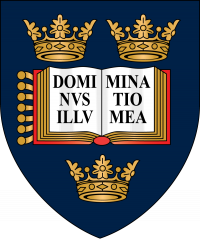Whether we liked it or not, a certain pandemic has been hard at work throwing wrenches into delicate man-made systems this year, and shipping lanes were not exempt. A rise in demand for consumer goods combined with reduced port staffing has meant that ports are congested, canals blocked and the time spent waiting for port berths has more than doubled since 2019.1 Although smaller container ships can be diverted to alternate ports, ultra-large container ships are limited to the few that can accommodate them, and whilst possible that demand will fall in oncoming months as government stimuluses end and incomes shrink, the story of shipping lane bottlenecks and backlogs is thought likely to continue.
I approached Lloyd’s Register’s internal publications and other internet accessible resources from a number of different angles, thinking of how historical cases could be applied to tackling the issue of shipping lane crowding. I briefly looked for resources on how ships got around naval blockades of important trade routes, seeing parallels there, and also port management at 17th century Dejima, Nagasaki, when it was Japan’s sole foreign-trading port. Suffice to say, Dejima’s policy of allowing the unloading of only 70 licensed ships per year would be difficult to persuade modern port authorities to take on. In the send, I settled on the solution of increasing efficiency in the shipping lane through increased automation to remove human error.
The reason I took this angle is that the current human situation in the shipping industry seems to be in crisis. Not only is there the crew change crisis 2 caused by Covid-19 transport restrictions, but ship officer recruitment has not been adequate and a shortfall is expected to be seen by 2026.3 Seafarer fatigue is a well-researched and known cause for collisions and accidents at sea, and whilst IMO regulations, such as those on minimum safe manning, are meant to protect seafarers’ standards of lives and well-being, Covid-19 has seen these often set aside.4 The reality is that seafarers across the world are experiencing unusual levels of mental and physical pressure that threatens their lives and collectively puts cracks in the system. A split-second of human inattention, or a slowed reaction time, or a delayed ability to judge the situation, could mark the difference between running aground and staying afloat.
Make no mistake, the current shipping lane blockages are certainly not solely caused by human strain and stress. The overall is a complex multifactorial system of systems, but human fatigue-caused inefficiency could very well be the horseshoe nail by which the kingdom is lost.
Turning a spit to roast meat was once a task that blistered kitchen boys’ hands. In the 18th century, this task was passed to small ‘turnspit’ dogs, who turned the spit with a treadmill. By the end of the 19th century, turnspit dogs had been phased out by the clock-jack, a spit-rotating machine that was popular for being cheap and not involving a very miserable dog or boy.
Increasing automation has a long history of both relieving humans from unsafe work environments and decreasing operational costs. Dockyard dredging, for instance, in the late 18th century was hand-done at Woolwich by convicts, to be replaced in 1802 with steam-driven bucket dredging, which made deeper channels with less labour (although this, too, was soon defeated by the Woolwich mud).5 The ship autopilot of the 1970s reduced fuel costs by minimising rudder movements and automated fog and anchor bells relieved seafarers of tedious but still precision-needed tasks.6 Containerisation in the 1960s allowed the automation of cargo loading and unloading, reducing labour in cargo-handling and relieving terminal personnel of dangerous work. Extrapolating automation trends, the logical long-term endpoint would be fully autonomous ships and roboticised terminals.
Past cases of implementing new technologies can warn us of potential issues before they arise. Outside of shipping, automatic train operation has been with us since 1968 with the opening of London’s Victoria Line and the world’s first driverless railway in Kobe, Japan, is already 40 years old. Collating global examples of their implementation processes and, sadly, accidents can offer insight into what happens when automatically operated systems fail, although, significantly the difference between peopled passenger vehicles and human-less self-driving ships is that failure should involve far fewer loss of lives.
Evidence from plane crashes to suggest that many occurred due to human-machine interface (HMI) issues. After a long journey on autopilot, a human pilot, lulled into complacency, doesn’t react quickly enough to suddenly being called to step in and take control.7 This is similar to accidents in the early 90’s with early one-man bridge operation experiments with ship autopilots, although the source of inattention is attributed to fatigue.8 It has been suggested, in both sailing and flight, that these accidents can be prevented through training and education to improve the human-automation integration.9 However, given the current situation in officers, where training may be rushed to provide the numbers as quickly as possible, we cannot trust the education to be adequate. On this basis, total autonomy and self-driving functions may be preferable to the human-automation integrated system of human and autopilot.

A Kitchen Spit-Rotating Machine

Woolwich Dockyard
Self-driving cargo ships are no longer a thing of the future. The first fully autonomous container feeder ship, the MV Yara Birkeland, is ready to sail sometime later this year. It exemplifies several reasons that make autonomous ships appealing as a solution to the current shipping lane issues of needing to cater to high demands with increasingly pressured ability to cater to it efficiently. It will be crewless, which in future ships would mean no crew quarters or lifeboats, allowing more cargo to be carried on a moderate-sized ship. It is equipped with sensors and the ability to avoid traffic and collisions, which autopiloted ships do not have. It could be vulnerable to hijacking without security, but ships are still vulnerable with security anyway, and an unmanned ship at least gives leeway to design it to forego accommodating people at all. Virtual hijacking may be a different matter. Autonomous ships do their work through constant interfacing with the external world, and such interfacing is what could make them vulnerable to cyber-attacks.
From this literature review project, I would argue that the most pressing issue in autonomous ships isn’t cybersecurity. Cybersecurity is an issue that affects every inch of the digitalised world. It’s simply a part of our networked reality, where we’re at the mercy of human ingenuity, both constructive and destructive, that has to be lived with. The biggest issue facing self-driving cargo ships and subsequent infrastructure changes is human resistance. Time and time again in history, mechanisation, industrialisation, automation etc. has led to under or unemployment, and subsequent unrest and riots, and that in pursuing productivity or operational efficiency living, breathing humans are side-lined. From the nineteenth century Luddites of the textiles mills to industrial action over developing a container berth in Tilbury 1968 , history has repeatedly shown how fears of unemployment and a lack of communication, information and empathy between parties strain the implementation of new technologies.
Persuading humans whose means of living are at stake to accept the changes automation will bring should be more than an afterthought. It should be central in the process from the get-go. That containerisation took off during the Vietnam War, South Korea’s industrialisation and China’s rapid rise as a manufacturing powerhouse suggests that new technologies are more readily implemented when absorbed into broader contexts of sociocultural change. In those contexts, so many changes may have been occurring simultaneously that persuasion needed less effort or could have been forced by the extraordinary circumstances. Ideally, if automation is to progress to removing people from ships as well as ports, it should do so alongside support programs to enable worker reskilling and security in daily lives.
What I felt most powerfully from this literature review was that whilst questions surrounding increasing automation asked ‘what was the minimum size of a crew we could get away with for maximum operational efficiency’, it was never asked ‘what is it the minimum size of a crew for both maximum crew well-being and operational efficiency’. In only one source, from 1969, did it mention that, for a tanker crew, a ‘balanced community’ and a happy one needed a minimum of 30 men.10 No wonder increasing automation constantly seems like a logical solution. If the ideal is a dehumanised workforce, then, of course, non-humans will perform the job better when they embody the ideal.
Thanks to the ghosts of history, the ‘ghost ships’ of self-driving cargo ships are truly haunted. Automation advances quickly and coldly. Maybe a ghostly tap from history - to look over your shoulder, to glance down to where the bodies are - is no bad thing to put the human warmth back in the system.
Take a look at Mina's literature review for even more insights on this subject!
Disclaimer: The views and opinions expressed in this article are those of the author and do not necessarily represent those of the Lloyd’s Register Group or Lloyd’s Register Foundation.
Footnotes
-
1
Chambers, S. ‘Global liner congestion worsens, 119 ports report disruption’. Splash247. July 21, 2021. https://splash247.com/global-port-congestion-worsens-116-ports-report-disruption/
-
2
International Maritime Organisation. ‘Crew changes: A humanitarian, safety and economic crisis’. In Focus. IMO. Updated 2021. Accessed September 16 2021. https://www.imo.org/en/MediaCentre/HotTopics/Pages/Autonomous-shipping.aspx
-
3
Srinisavan, A. ‘New BIMCO/ICS Seafarer Workforce Report Warns of Serious Potential Officer Shortage’. News and Trends. BIMCO. July 28th 2021
-
4
International Transport Workers’ Federation Maritime Safety Committee. ‘Beyond the Limit: How Covid-19 corner cutting places too much risk in the international shipping system’. ITF Seafarers. 2020. https://www.itfseafarers.org/en/resources/materials/beyond-limit
-
5
‘Chapter 2 – Woolwich Dockyard Area’, in Guillery, P. (ed.), Survey of London Volume 48. Woolwich Edition. 2012.
-
6
Glover, FD., ‘The Benefits and Pitfalls of Marine Automation for the Ship-handler’. IMarE Joint Automation Conference. 1974.
-
7
Eliot, LB. ‘Are Airplane Autopilot Systems the same as a Self-driving Car AI?’. AI Trends. July 21 2017. Accessed September 15 2021. https://www.aitrends.com/ai-insider/airplane-autopilot-systems-self-driving-car-ai/
-
8
MAIB. ‘Bridge Watchkeeping Safety Study’. 2004. https://www.gov.uk/government/publications/bridge-watchkeeping-safety-study
-
9
Mackay-Camp, R. From the real world to the virtual world. 2005.
-
10
Gray, D. Marine automation - present and future. IMAS 69 Plenary Session-paper Control Engineering. P.309 – 315.



